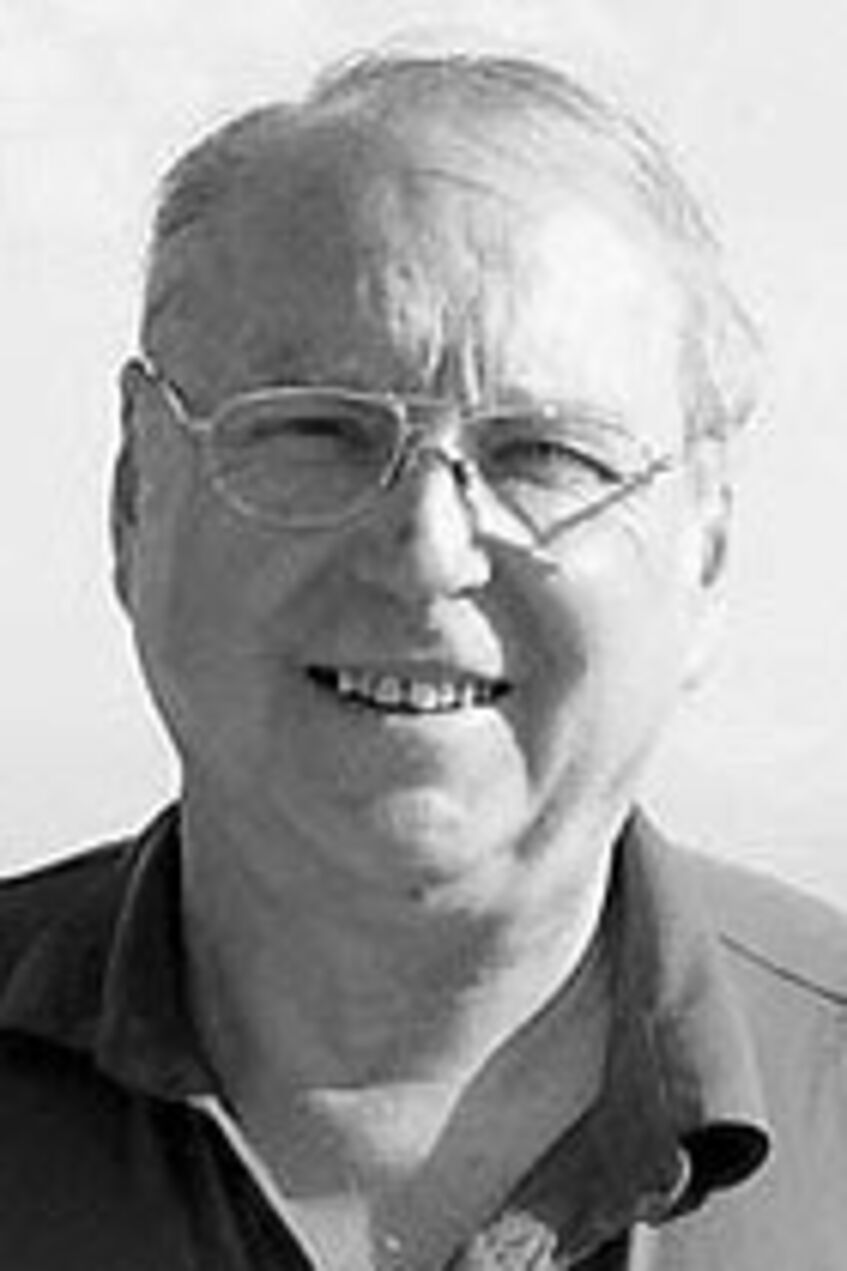o. Univ.-Prof. i.R. Dr. Anton Weber
Honorary scientist and lecturer
4. floor, room 218
t: +43 (0)1 4277-540 87
m: anton.weber@univie.ac.at

Interests and areas of research
- Morphology and development of angiosperms (vegetative structures, inflorescences, flowers)
- Floral and dispersal ecology
- Systematics of angiosperms (specially of tropical alliances, e.g., Gesneriaceae, Melastomataceae, Zingiberaceae)
- Tropical botany (field work mainly in Malaysia and Costa Rica)
- Gesneriaceae-Gattungen
Teaching
Cooperations
- With scientists and scientific institutions worldwide (esp. USA, UK, D, MY)
Curriculum Vitae
Current position
- 2004– Honorary scientist and lecturer at the University of Vienna
Education and scientific career
- 2004 Retirement
- 1992–2003 Head of the Department "Morphology and Reproductive Ecology" at the Institute of Botany
- 1990–1992 Head of the Institute of Botany, University of Vienna
- 1986–1992 Head of the "Department of Morphology" at the Institute of Botany
- 1983 Appointment as full professor (o. Univ.-Prof.)
- 1977 Postdoctoral lecture qualification ("Habilitation") in "Botany with special regard of morphology and systematics of higher plants"
- 1971–1977 University assistant at the Institute of Botany, Univ. of Vienna
- 1971 Completion of doctoral thesis ("Morphology of the gynoecium of Gesneriaceae") and granting of the title "Dr. phil." (Doctor of philosophy, equivalent to Ph.D.)
- 1965–1971 Studies in biology (botany, zoology) at the University of Vienna, Austria
Publications
Showing entries 1 - 20 out of 158
2025
Möller, M., Middleton, D. J., Ulrich, S., & Weber, A. (2025). Bournea is not supported as separate from Oreocharis (Gesneriaceae). Edinburgh Journal of Botany: an international journal of plant systematics and biodiversity, 82(Article 2028), 1-9. Article EJB.2025.2028. https://doi.org/10.24823/ejb.2025.2028
2022
Taram, M., Borah, D., Tag, H., Möller, M., & Weber, A. (2022). Whytockia (Gesneriaceae), a new generic record for India, based on a new species, W. arunachalensis, from Arunachal Pradesh. Rheedea, 32(1), 18-29. https://doi.org/10.22244/rheedea.2022.32.01.02
2021
Chautems, A., Perret, M., & Weber, A. (2021). Blüten- und Bestäubungsvielfalt bei Sinningia (Gesneriaceae). Der Palmengarten, 85, 108-117. https://doi.org/10.21248/palmengarten.578
Weber, A., Bellstedt, D. U., & Möller, M. (2021). Die Gesneriaceen Afrikas und ihre vogelblütigen Vertreter: Streptocarpus dunnii und S. myoporoides. Der Palmengarten, 85(1/2), 125-138. https://doi.org/10.21248/palmengarten.580
Weber, A., & Gerlach, G. (2021). Die großen wissenschaftlichen Leistungen von Stefan Vogel (1925–2015). Teil 6 (Schluss). Die Pilzmückenblumen. Der Palmengarten, 84(2), 91-110. https://doi.org/10.21248/palmengarten.547
2020
Weber, A., Middleton, D. J., Clark, J. L., & Möller, M. (2020). Keys to the infrafamilial taxa and genera of Gesneriaceae. Rheedea, 30(1), 5-47. https://dx.doi.org/10.22244/rheedea.2020.30.01.02
2019
Weber, A., Gerlach, G., & Dötterl, S. (2019). Die großen wissenschaftlichen Leistungen von Stefan Vogel. Teil 5b. Öl statt Nektar – die Ölblumen (dikotyle Vertreter). Der Palmengarten, 82(2), 48-65. https://doi.org/10.21248/palmengarten.482
Weber, A., Gerlach, G., & Schäfer, H. (2019). Die großen wissenschaftlichen Leistungen von Stefan Vogel. Teil 5c. Öl statt Nektar – die Ölblumen (monokotyle Vertreter und abschließende Bemerkungen). Der Palmengarten, 83(1), 41-53.
2018
Weber, A., & Gerlach, G. (2018). Die großen wissenschaftlichen Leistungen von Stefan Vogel (1925–2015) Teil 4. Die Parfümblumen und ihre prächtigen Bestäuber. Der Palmengarten, 81(2), 133-148. https://ojs.ub.uni-frankfurt.de/Palmengarten/index.php/Palmengarten/article/view/443
Weber, A., Gerlach, G., & Dötterl, S. (2018). Die großen wissenschaftlichen Leistungen von Stefan Vogel. Teil 5a. Öl statt Nektar – die Ölblumen (Allgemeine Aspekte). Der Palmengarten, 82(1), 49-61.
2017
Weber, A., & Steinecke, H. (2017). Die großen wissenschaftlichen Leistungen von Stefan Vogel. Teil 2. Fledermausblumen und Blumenfledermäuse. Der Palmengarten, 80(2), 136-144.
Weber, A., & Steinecke, H. (2017). Die großen wissenschaftlichen Leistungen von Stefan Vogel. Teil 3. Blütendüfte und ihre Bildung in den Osmophoren. Der Palmengarten, 81(1), 69-77.
Weber, A. (2017). The Botany of Gesneriaceae. – The Gesneriad Society & The Gesneriad Reference Web. Web publication
Weber, A. (2017). The genius behind the gesneriads: Conrad Gessner – 500 years. III. Gessner, Gesneria and the Gesneriaceae. Gesneriads: the journal for gesneriad growers, 67(4), 42-50.
Weber, A. (2017). The genius behind the gesneriads: Conrad Gessner – 500 years. II. The work. Gesneriads: the journal for gesneriad growers, 67(3), 15-24.
Weber, A. (2017). The genius behind the gesneriads: Conrad Gessner – 500 years. I. The life, career and scientific significance of Konrad Gessner. Gesneriads: the journal for gesneriad growers, 67(1), 5-9.
Möller, M., Nampy, S., Janeesha, A. P., & Weber, A. (2017). The Gesneriaceae of India: Consequences of updated generic concepts and new family classification. Rheedea, 27(1), 23-41.
2016
The Angiosperm Phylogeny Group, Chase, M. W., Christenhusz, M. J. M., Fay, M. F., Byng, J. W., Judd, W. S., Soltis, D. E., Mabberley, D. J., Sennikov, A. N., Soltis, P. S., & Stevens, P. F. (2016). An update of the Angiosperm Phylogeny Group classification for the orders and families of flowering plants: APG IV. Botanical Journal of the Linnean Society, 181(1), 1-20. https://doi.org/10.1111/boj.12385
Etl, F., Berger, A., Weber, A., Schönenberger, J., & Dötterl, S. (2016). Nocturnal plant bugs use cis-jasmone to locate inflorescences of an Araceae as feeding and mating site. Journal of Chemical Ecology, 42(4), 300–304. https://doi.org/10.1007/s10886-016-0688-9
